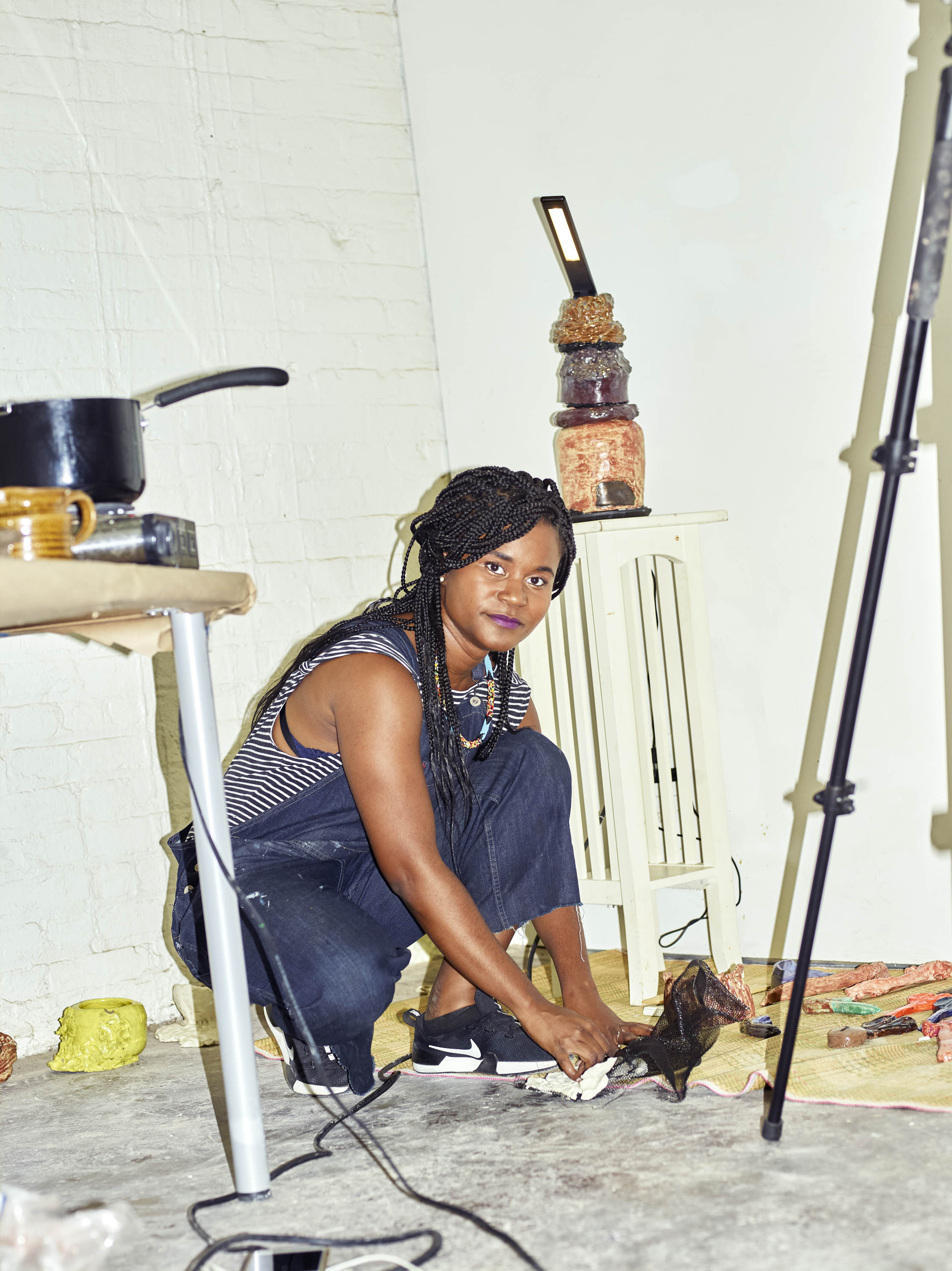
Ilana Harris-Babou invites me to tag along to the grand opening of Restoration Hardware in Manhattan’s Meatpacking District on a research expedition of sorts. This past winter, the Brooklyn-born performance and video artist mounted a gleefully sardonic parody of the luxury furniture store called “Reparation Hardware,” at Larrie gallery. Using modes like the word play found in the title, “Reparations” dealt with the design world’s obsession with taking what’s old and making it new again. “It’s this idea that you can curate the world, and bring difference in,” Harris-Babou says, “and that it is controlled by the taste-making, omnitiate eye of the furniture, which grounds itself as modern, centered and white.” This comes to light in a video piece where Harris-Babou seductively caresses repurposed wood in an artfully crumbled New England barn. “I like to use humor and familiar forms as a Trojan horse to get heavier material into people’s line of sight,” says the artist.
Harris-Babou’s practice mines the bizarre and at times problematic cultural touchstones that we collectively consume, from wellness products to foodie culture. This includes assuming the persona of a celebrity chef in her recent video piece, Cooking with the Erotic, where the artist and her co-chef (her mother) take turns quoting Audre Lorde’s 1978 text, “Uses of the Erotic” between seductively smattering acrylic paint on artisanal bread. “Not everything I look at is from a completely critical stance,” she says. “It also comes from a space of love. Cooking shows are something I love, and see myself in. We are all so embedded within visual culture that we’re all also implicated by it too.”

Putting the chef’s hat aside, Harris-Babou shares that she’s been thinking through a new character that can straddle more abstract concepts, like the feeling of belonging or being “at home,” especially as it relates to this country’s narratives of aspiration. “I was thinking about a tourist character, who moves between being at leisure, and being alienated—being of the space, but also seeing what can we remove or keep.” The artist references a conversation between Audre Lorde and James Baldwin in Essence magazine, and how Lorde knew that the “American dream” was never really hers, as it is more of a nightmare. “I know I don’t fit into the cohesive narrative, so that gives me ability to see the strangeness too. Thinking through the American dream is a longer-term project.”










 in your life?
in your life?

